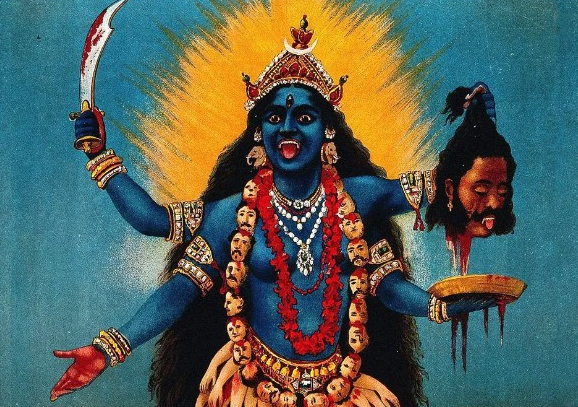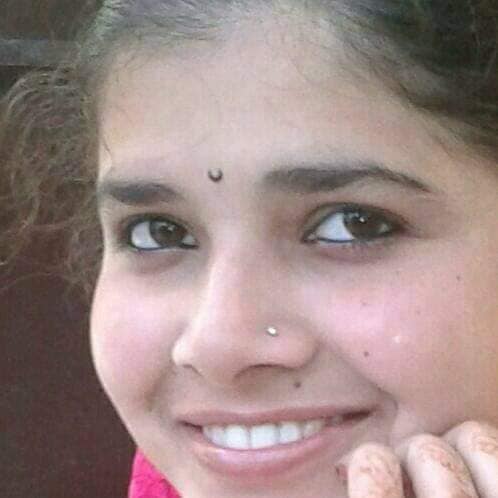Kali - Timeless Destruction
Kali is goddess which was worshiped throughout south Asia, mainly in Kashmir, Bengal, Assam and Southern India
Total Views |
"During the Battle of Mahishasura, Goddess comes into the battlefield, riding on a lion, Ready to leap and finish off Mahishasura, after battling fiercely with the demon army, Her anger boils on and on….."
With this uncontrolled anger, her forehead bursted and form appeared from it, the form which is as black as the darkest night, with a power to crumble the universe….’
‘Kali’ the goddess of Time, Death, destruction and motherly love. Sounds weird? This is the beauty of it, she is the goddess who is the goddess of death and motherly love too.

Kali is goddess which was worshiped throughout south Asia, mainly in Kashmir, Bengal, Assam and Southern India, the references of Kali worship appears as early as Atharva Veda (1200 BCE – 1000 BCE), but first and proper mention of Kali as goddess is found in the Kathaka Grhya Sutras (500 BCE).
Kali at a glance, associated with death, time and doomsday, but ironically she is also seen as a form of strong and powerful mother goddess. Kali is embodiment of ‘Shakti’ i.e. Feminine energy, Creativity, force of creation and Fertility. She is a violent incarnation of Parvati, The consort of Shiva.
As we can see her association with violence along with creation, Kali can be tracked as a pre-vedic goddess, which was adopted later by Tantrik traditions.
Kali is mostly depicted in art as a fearful fighting figure with a necklace of heads, skirt of arms, lolling tongue, and brandishing a knife dripping with blood.
“As per legends, Once Kali was born from the forehead, The kali went as wild as crazy, she beheaded and ate all the demons and their armies, making garland from their head, she was unstoppable. There is nothing which can match her power, nobody is safe in front of her wrath, to calm her down and to make her look that, she is the mother who gives life, all powerful shiva laid down in her path. Kali, in her rage, stands on Shiva’s chest, once she touched him, she realized just who she is, and on whom she is standing, she calmed down and again took the form of Parvati, the mother and nurturer of this universe. ”
Devi Mahatmyam, 6th century text, is the first depiction of this battlefield, with the story of the demon, Madhu-Kaitabha, Mahakali taking the form of Mahamaya. Mahakali, literally means Greater kali. Etymologically, in Sanskrit, Mahakali is a female form of Mahakaal, which means Great time, which is also translated as Shiva, so Mahakaal and Mahakaali are both God and Goddess of Death as time is seen as death too.
Mahakali is the presiding Goddess of the first episode of the Devi Mahatmya. Here, she is depicted as Devi in her universal form as Shakti. Here Devi serves as the agent who allows the cosmic order to be restored.
Kali is portrayed in the Mahakali form as having ten heads, ten arms, and ten legs. Each of her ten hands is carrying a various implement which varies in different accounts, but each of these represents the power of one of the Devas or Hindu Gods and are often the identifying weapon or ritual item of a given Deva.
‘Ekamukhi’, Kali with one head, also depicted with ten arms, signifies the power of all the universe to come through her grace. Dakshinakali is the most popular form of Kali in Bengal. She is the benevolent mother, who protects her devotees and children from mishaps and misfortunes.
Dakshina, means gifts for priests or payments for your rituals. These gifts are given with the right hand, that is why, the Goddess is also shown as right hands are usually depicted in gestures of blessing and giving of boons. One version of the origin of her name comes from the story of Yama, lord of death, who lives in the south (dakshina). When Yama heard Kali's name, he fled in terror, and so those who worship Kali are said to be able to overcome death itself.
The name Kali means Kala or force of time. When there was neither the creation, nor the sun, the moon, the planets, and the earth, there was only darkness and everything was created from the darkness. The Dark appearance of Kali represents the darkness from which everything was born. Her free, long and black hair represents nature's freedom from civilization. Under the third eye of kali, the signs of both sun, moon, and fire are visible which represent the driving forces of nature.
In Tantric tradition, Kali who is standing on Shiva, The Shiva is shown as a symbol of ‘Purusha’, i.e. unchanging reality of universe or in other form, it is pure consciousness. Standing Kali, is symbolized as Prakriti, which is matter or nature or in simple terms, feminine form of nature. Prakriti and Purusha merging is a representation of ultimate reality.
Another Tantric interpretation looks at Shiva as a consciousness and Kali as unbound power or energy. Energy and consciousness are dependent on each other for creation, preservation and Destruction i.e. cycle of life.
The Nirvana-tantra says the gods Brahma, Vishnu, and Shiva all arise from her like bubbles in the sea, ceaselessly arising and passing away, leaving their original source unchanged. It declares her to be an essence of her own form (svarupa) of the Mahadevi.
Tantric Kali cults such as the Kaula and Krama had a strong influence on Tantric Buddhism, as can be seen in fierce-looking yoginis and dakinis such as Vajrayogini and Krodikali. Shakta Hindu and Tantric sects additionally worship her as the ultimate reality or Brahman. She is also seen as the divine protector and the one who bestows moksha, or liberation.
When we see the idol of Kali, we see her nakedness, her unbound energy and her unabashed power which is the cause of destruction, i.e. beginning of creation. So, Discover your own power and wisdom. Kali taught you to make your own definition. Kali taught us to love your loved ones with all the force you have. She is an endlessly dancing, primal force of nature, reminding us that Truth is not something we get from material things, but instead from our ability to let those things come and go without clinging or grasping.
Kali is just like us, eternally dancing through challenges to create all good and happiness.
--


